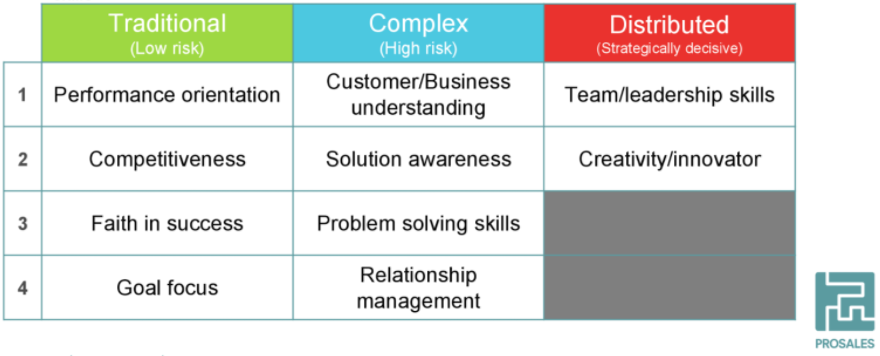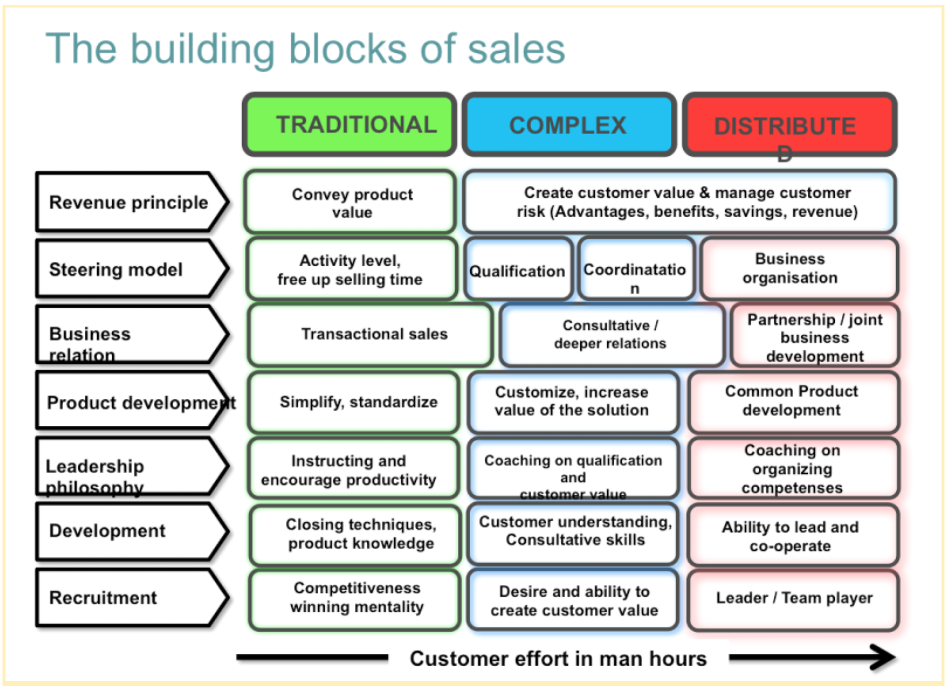
Is bad sales logic destroying your profit?
There is an epidemic in the sales industry, and it’s destroying profits. Year after year, sales effectiveness continues to decline, and while the causes are many and complex, there is one big problem that is causing way more trouble than it should.
Put simply, that problem is bad sales logic.
Henrik Larsson-Broman of the Prosales Institute explains the issue like this: “There is not one perfect sales model. It is dependent on the customer’s buying logic.” Unfortunately, many sales leaders treat their organizations with a one-size-fits-all approach, as though they can force buyers to buy in a certain way if they can only get their salespeople to behave in the right way.
It’s putting the cart before the horse to do it that way, yet many organizations persist. It’s only when the sales leaders match up their sales logic to the customer’s buying logic that sales effectiveness will improve.
To illustrate just how important this is, Prosales conducted research and determined that when sales organizations align their sales logic with buying logic, profits increase on average by 3%.
Here’s what you need to know about buying logic in order to align your sales logic effectively.
Customer buying logic is dependent on the complexity of the deal
While every company is different, and every individual is different, customer buying logic can be categorized broadly based on the complexity of the deal. As I’ve discussed elsewhere, deal complexity is in turn mainly dependent on three factors:
- The number of decision makers
- The length of the sales cycle
- The buyer’s perceived risk
When attempting to understand buyer logic, the third point is the most important one and in large part determines the first two. Risk, for the buyer, is further dependent on:
- Price
- Invasiveness
- Level of effort required
- Effect on operations, organization, and employees
In general, buyers will fall on a spectrum of risk from very low risk to very high risk. Where they are on the risk spectrum determines where they are on the complexity spectrum. Larsson-Broman divides the spectrum into three main categories: Traditional (low risk, also known as transactional), Complex (high risk), and Distributed (strategically decisive).
In transactional sales, the buying logic focuses on price, simplicity, and speed. In complex sales, the logic includes price but focuses much more on value, trust, and risk mitigation. The higher risk also translates to larger buying committees and longer sales cycles, which are driven by the customer’s logic. In distributed sales, the buyer’s logic becomes even more risk-aware, and focused on project planning, gaining internal approvals, addressing worries, how the change will impact their organization–all of which drives even longer cycles and larger buying committees.
Your sales team’s success is dependent on aligning your sales logic with the buyer’s buying logic
It still surprises me how many organizations don’t understand their customer’s buying logic, let alone align with it. There seems to be a trend toward hiring large inside sales teams to engage in large volume outbound calling, utilizing all the latest tricks and tools to “catch people at the right moment” and manipulate them into making impulsive decisions.
This approach might work in a transactional environment where the buyer’s risk is low and it makes sense to them to make a quick purchase. But it’s far less effective when the risk is high for the customer and their logic is focused on trust and relationship.
In other cases, organizations fail to recognize that some of their products and services engage different customer buying logics than others. These organizations may have the same teams handling complex multi-million dollar deals and simple, transactional $45 deals.
These are only a few examples. Most organizations have at least some level of misalignment between the customer’s logic and the buyer’s.
Success factors are different based on the buyer’s logic
In a transactional sales environment, the success factors for salespeople are vastly different for those in complex and distributed environments. According to Larsson-Broman, primary success factors for each group include:

Likewise, management success factor vary by customer buying logic. Traditional sales, he says, demands “instructors” who tell salespeople what to do, establish clear ways of working, and cheer them on. In complex sales, coaches need a stronger ability to listen and solve problems, to understand customers and strategies, and to inspire trust and confidence. In distributed sales, the necessary skills shift to organization, orchestration, managing group dynamics, and setting clear direction.
The building blocks of sales vary depending on buyer’s logic
The impact of buying logic extends beyond the sales team’s skills and tactics. When properly understood, it impacts every level of the organization, from revenue principles to product development to recruitment.

Understanding customer logic and its impact on your organization isn’t a silver bullet that will drive superior effectiveness overnight. But it is a necessary first step toward greater sales effectiveness, and the sooner organizations get a handle on it, the sooner they can reverse the declining effectiveness trend.
What about your organization? Do you understand the logic your buyers use for each of your product lines? Have you taken the time to align your sales structure, process, and strategy accordingly?

By George Brontén
George is the founder & CEO of Membrain, the Sales Enablement CRM that makes it easy to execute your sales strategy. A life-long entrepreneur with 20 years of experience in the software space and a passion for sales and marketing. With the life motto "Don't settle for mainstream", he is always looking for new ways to achieve improved business results using innovative software, skills, and processes. George is also the author of the book Stop Killing Deals and the host of the Stop Killing Deals webinar and podcast series.
Find out more about George Brontén on LinkedIn







